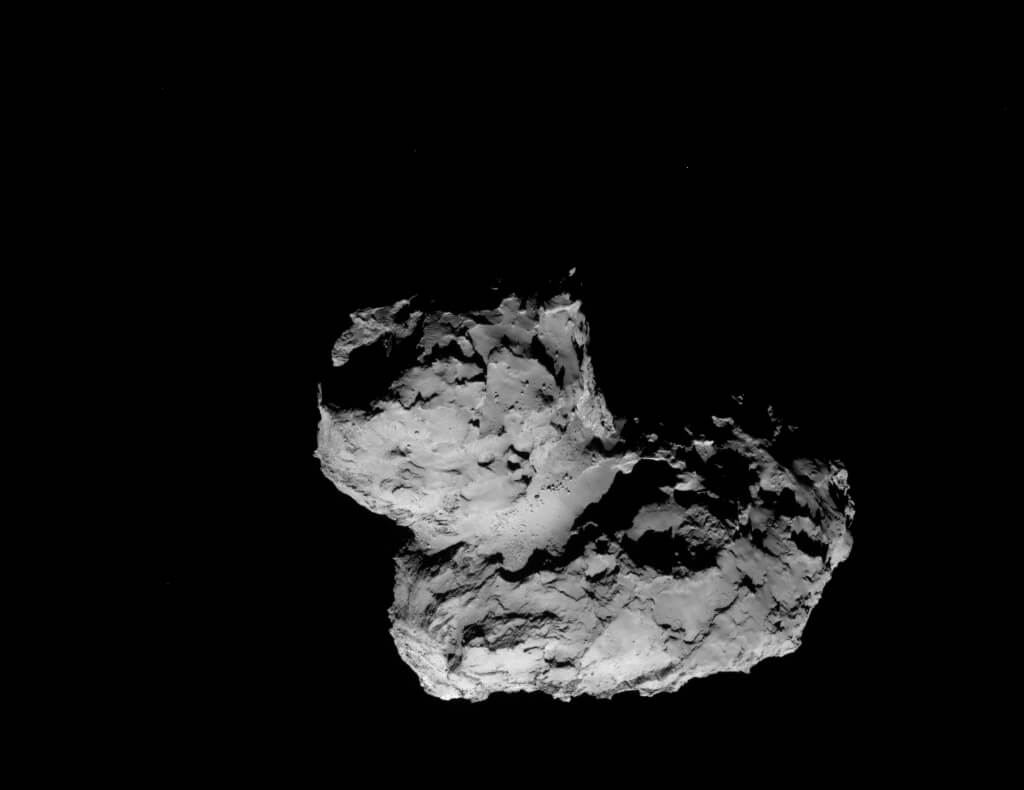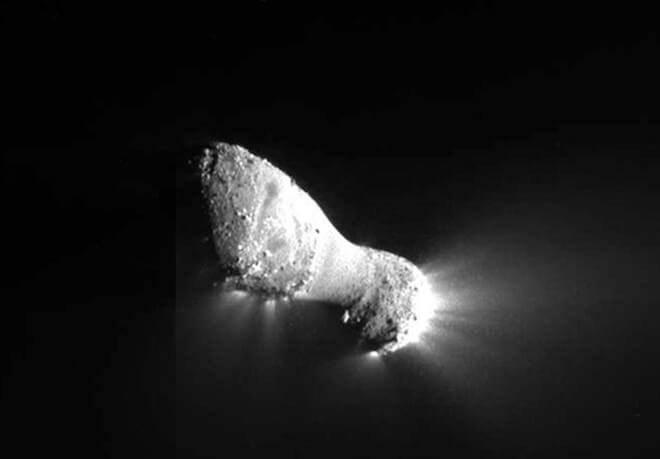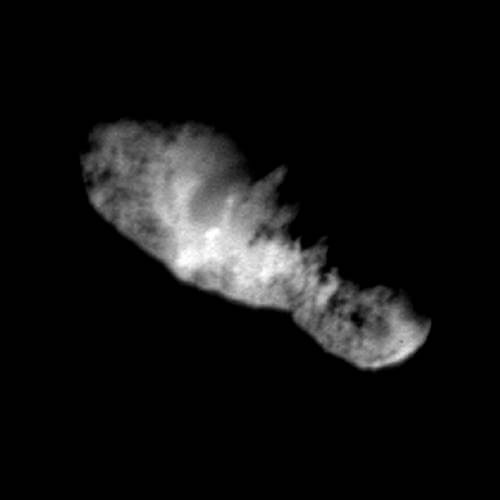- Get link
- X
- Other Apps

While scientists are working on analyzing new images and data from the Rosetta mission to comet 67P / Churyumov-Gerasimenko, new insights arise about the interesting question: why does this comet have a form of a duck?
The comet consists of two parts, which, if you look closely, resemble the head and body of a duck. The strange shape could have been formed as a result of the erosion caused by the flows and explosions of gas escaping from the comet and cutting material in the duck neck. Or the head and the body could be two separate parts that crashed into each other and “stuck together”.
A baseline analysis of new images taken by the Rosetta spacecraft, which is currently flying around comet 67P, revealed breaks and layers that work in favor of the latter scenario, says Simon Marchi, a planetologist from the Southwestern Institute in Boulder, Colorado. The scientist presented his results a couple of days ago at a meeting of the American Geophysical Society.
The comet shape of comet 67P is not unusual. Comet Borrelli, which Deep Space 1 visited in 2001, and Comet Hartley 2, which was studied by the Deep Impact / EPOXI probe in 2010, also consist of two fractions. But scientists could not determine whether the shapes of these comets were formed as a result of erosion or as a result of a collision. In any case, it seems that this process may be involved in the formation of forms of many other comets.
Based on the new images taken by Rosetta using the OSIRIS camera, Marchi and his colleagues discovered terraces-like layers on the comet's body. This layering ideally coincides with parallel lines on the opposite side of the body, which means that these layers pass through the entire body as part of its internal structure. Although the “head” also has layers, they do not coincide with those in the body, which implies a different origin of the parts. If the body and head were made of one piece, the layers would have to pass in the same direction.

The comet's neck also shows signs of a head and body collision. This area is covered with large faults that could be formed by shock waves arising from the collision of parts of the comet. Some of the faults are also displaced and suggest that they arose from small pieces that swam nearby during the merger of the head with the body.
General characteristics of the head and neck are also different, if you believe the analysis. For example, areas covering the body are smoother than covering the head.
The collision, in the course of which the comet was formed, should have passed rather gently, otherwise the two pieces would simply destroy each other. The head and body can also be part of a larger parent body that has scattered into pieces due to different collisions. After the initial impact, the head and body were close and pulled each other through their own gravity.
Marchi himself tends to scenario involving the parent body. The head shows many faults, some of which reach hundreds of meters in length and, perhaps, tens in depth. The rifts are too large to form in the process of a gentle fusion of the head and body, therefore, according to Marchi, they could have been formed as a result of a previous, more serious collision - which could also destroy the hypothetical parent body.
Analysis of the computer model is consistent with this scenario. The model shows that in the early history of the solar system there were many ice objects that flew everywhere, and small objects could collide with large ones, breaking them into fragments. The head and body of comet 67P can be two such fragments.

Both analyzes complement each other, says Philippe Lamy, a planetary scientist at the Marseille Astrophysical Laboratory in France, who heads the second study. Nevertheless, so far there is no evidence that the comet was formed as a result of a collision. Lamy's analysis modeled the orbits of comets, similar to the 67P, to see how much sunlight a comet can receive over time. By combining this model with a well-known comet erosion model, scientists found that most comets, similar to 67P, could easily lose weight, which would be enough to separate the body into two lobes.
Sunlight is needed in order to activate the gas jets that erode the material and form the neck. To get its current form of a duck, it was enough for a comet to change its direction sometime in the past, so that direct sunlight would fall on the place where the comet's neck now lies. Whether this actually happened is still unknown. But it certainly could.
According to Lamy's analysis, both erosion and collision — or a combination of both processes — could have formed comet 67P. "Rosetta" continues to study the comet, so soon we will get more data and better pictures, which will bring scientists closer to finding the exact answer.
The article is based on materials .
- Get link
- X
- Other Apps
Comments
Post a Comment